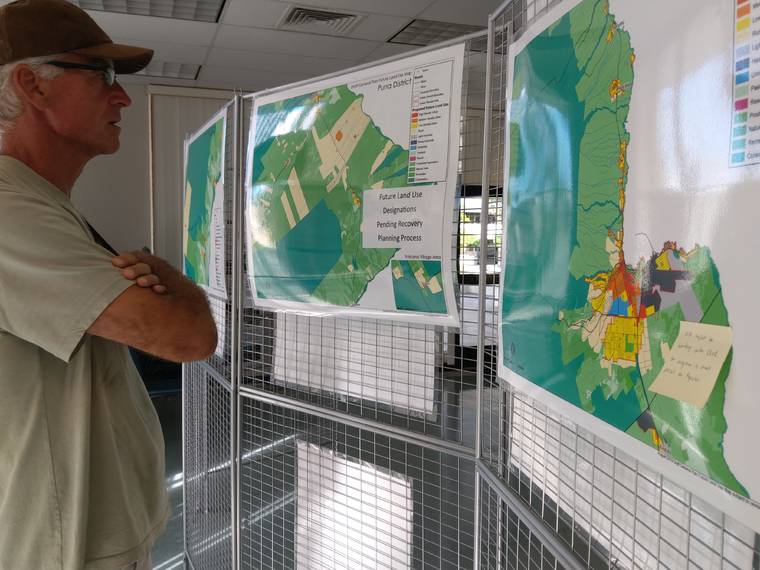Working the plans: State, county planners take community input
HILO — A goal without a plan is just a wish.
Those words by novelist Antoine de Saint-Exupér are being taken to heart by planners from the state and the county, who’ve been holding planning session roadshows over the past several weeks. And while the subject matter can get dense, the sessions have been popular with local residents.
The county Planning Department is working on its general plan, a comprehensive blueprint updated every decade to guide growth. The county’s a little behind; the last plan was completed in 2005. This newest one won’t be done until 2020.
A draft and timeline for the county plan, as well as a means to submit comments, can be found at https://www.hiplanningdept.com/general-plan
“People get caught up in their daily lives, they think, ‘How does this impact me?’” said county planner Bethany Morrison. “It’s really about our daily lives, and things we deal with, the county plan can address.”
The 193-page plan covers a bevy of topics, including affordable housing, agriculture, climate change, disaster preparedness, environmental conservation, public access recreation, public safety, roads, transportation and visitor accommodation.
Planners held community “speakout” events during August, with some 300 people total attending at Hilo, Kona, Waimea and Naalehu, Morrison said. Those were capped off with agency sessions Thursday and Friday.
Next come topic and community workshops in September and October geared to community concerns in Hawi, Kealakekua, Volcano, Pahoa and Honokaa.
Once the draft is finalized, it goes to the island’s two planning commissions and then on to the County Council for formal adoption, a process that probably won’t be complete until late next year.
The state, meanwhile, on Thursday wrapped up statewide listening sessions for its ocean resources plan. The final session, in Hilo, had more than 25 people throwing out suggestions via voice and a cellphone survey hookup.
The mission is to improve the condition of ocean resources and the coastal zone to sustain ecological, cultural, social and economic benefits for future generations. The project, overseen by the state Office of Planning, began in 2006, was formalized in 2013 and is anticipated to be completed in phases through 2030.
The 2013 plan identified 11 management priorities: Appropriate coastal development, management of coastal hazards, watershed management, marine resources management, coral reef management, ocean economy management, cultural heritage of the ocean, training, education and awareness, collaboration and conflict resolution, community ocean management projects and national ocean policy and Pacific regional ocean initiative. The agency has created a dashboard to help track progress of the initiatives at https://planning.hawaii.gov/czm/ormp/dashboard.





